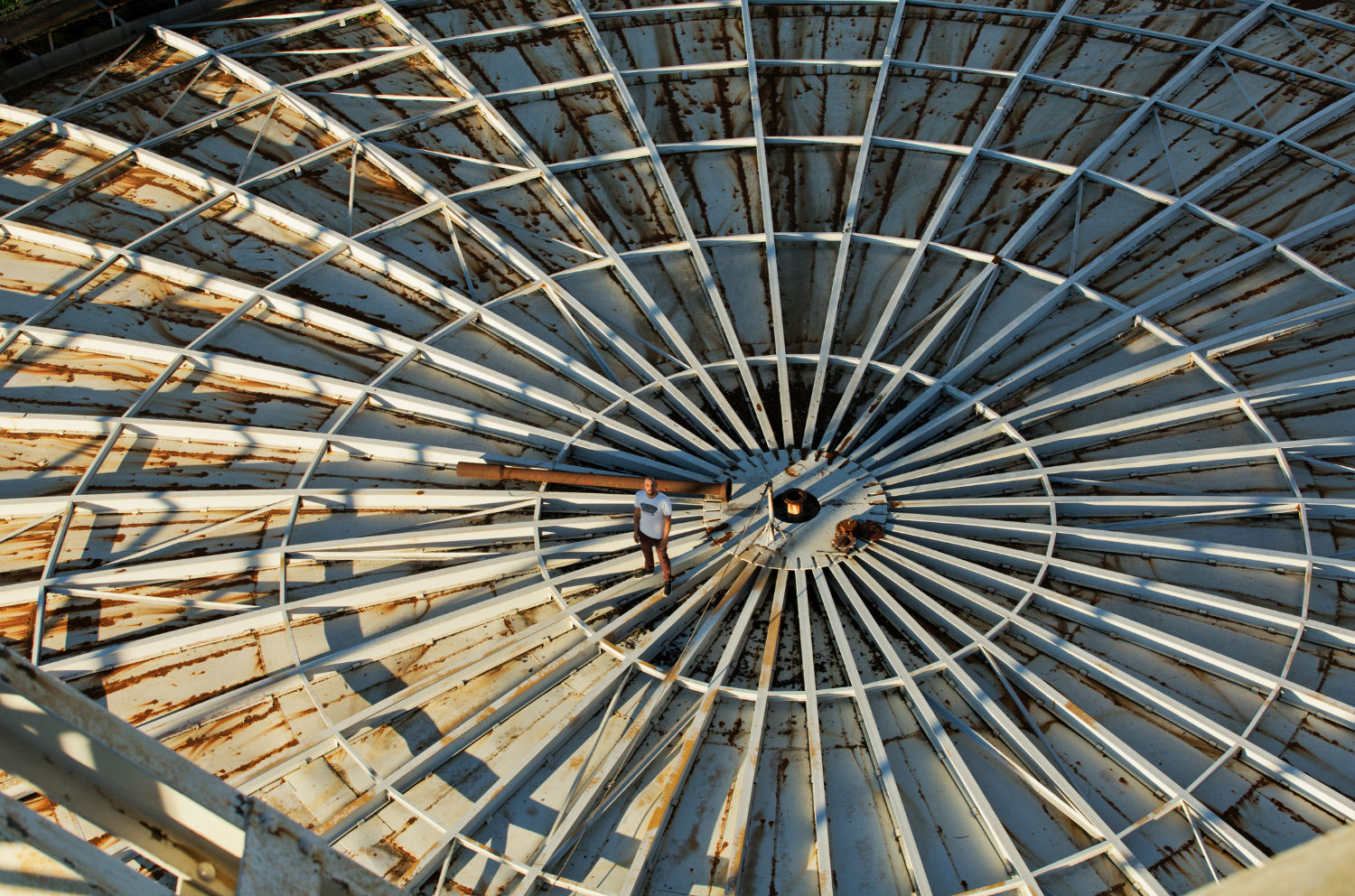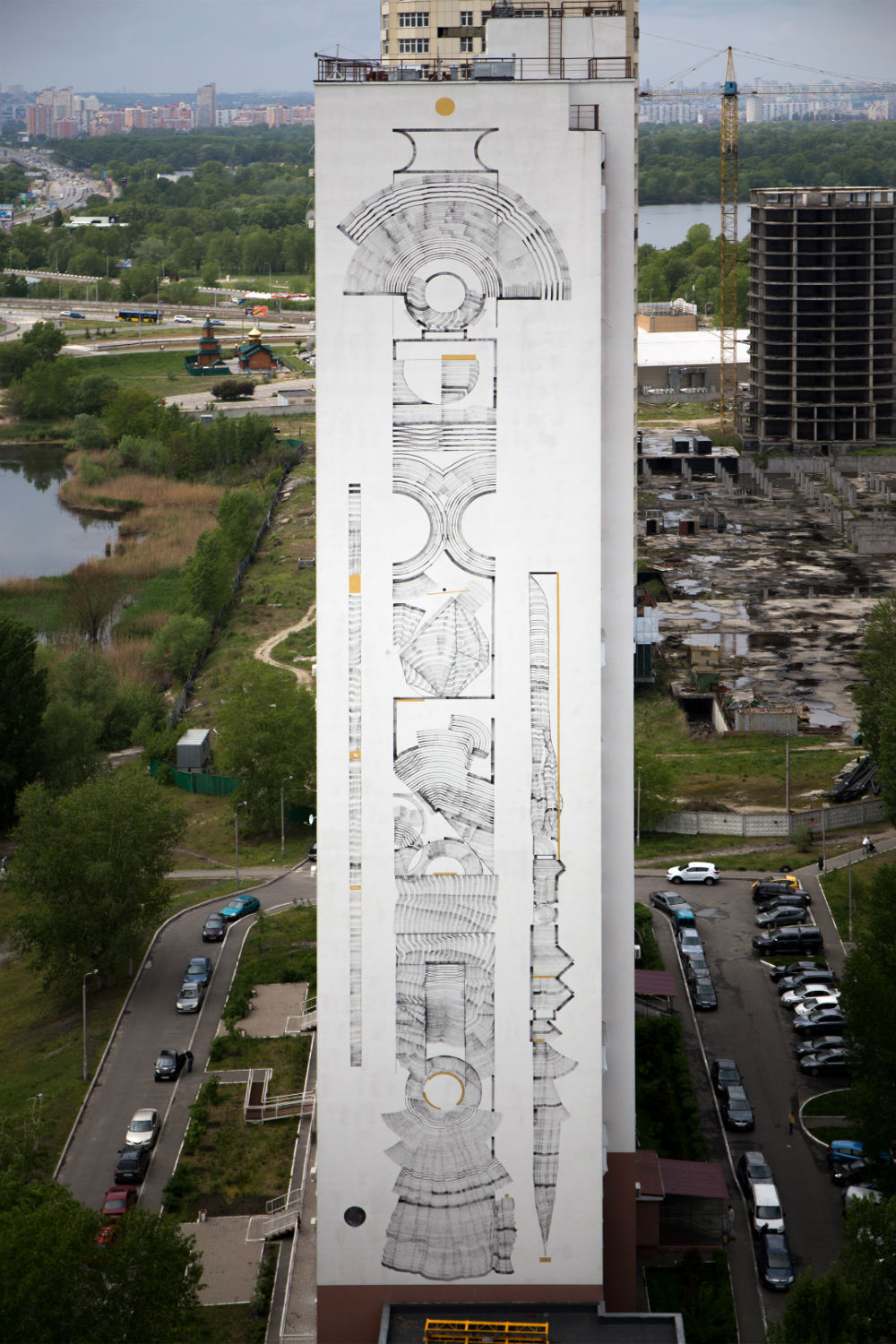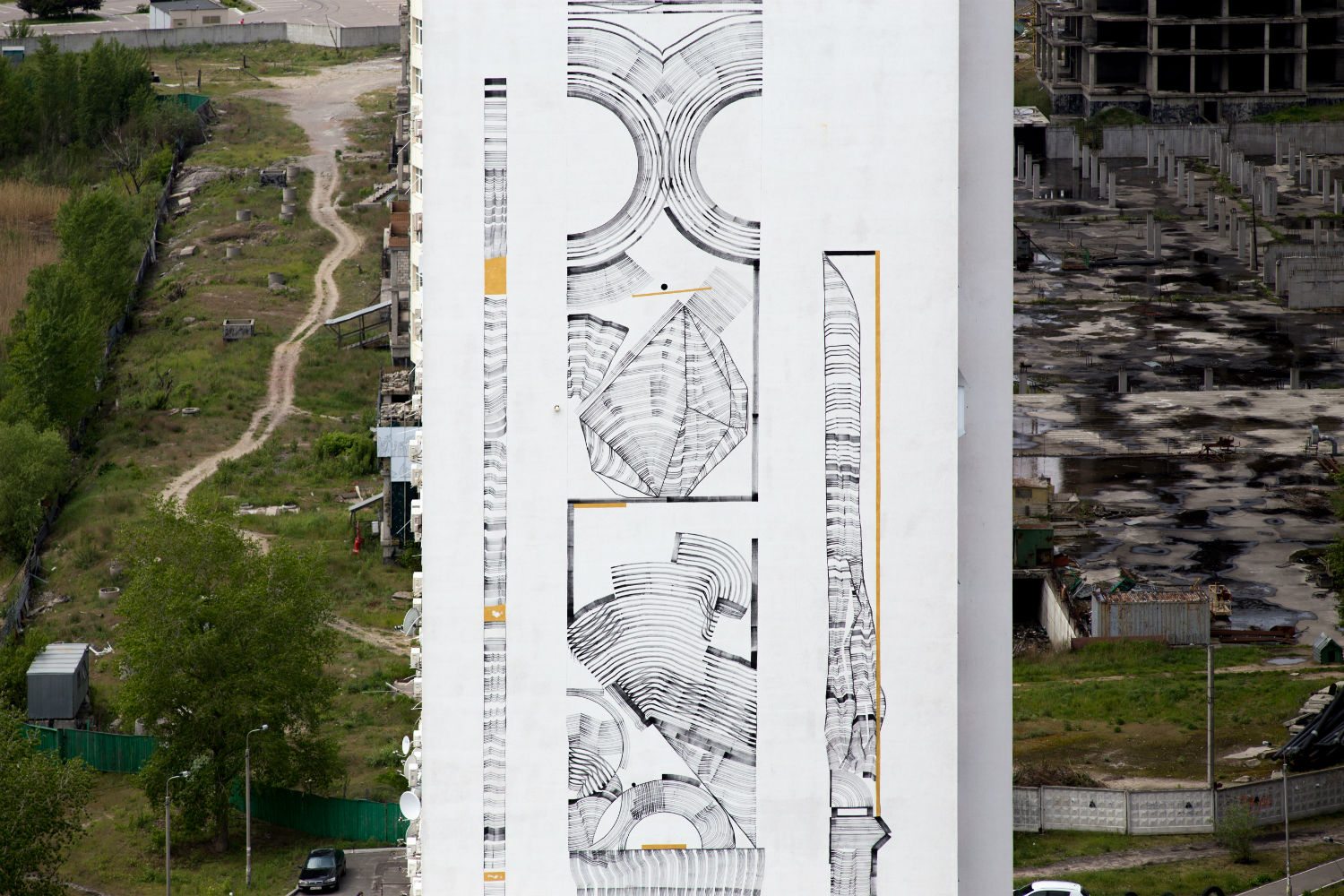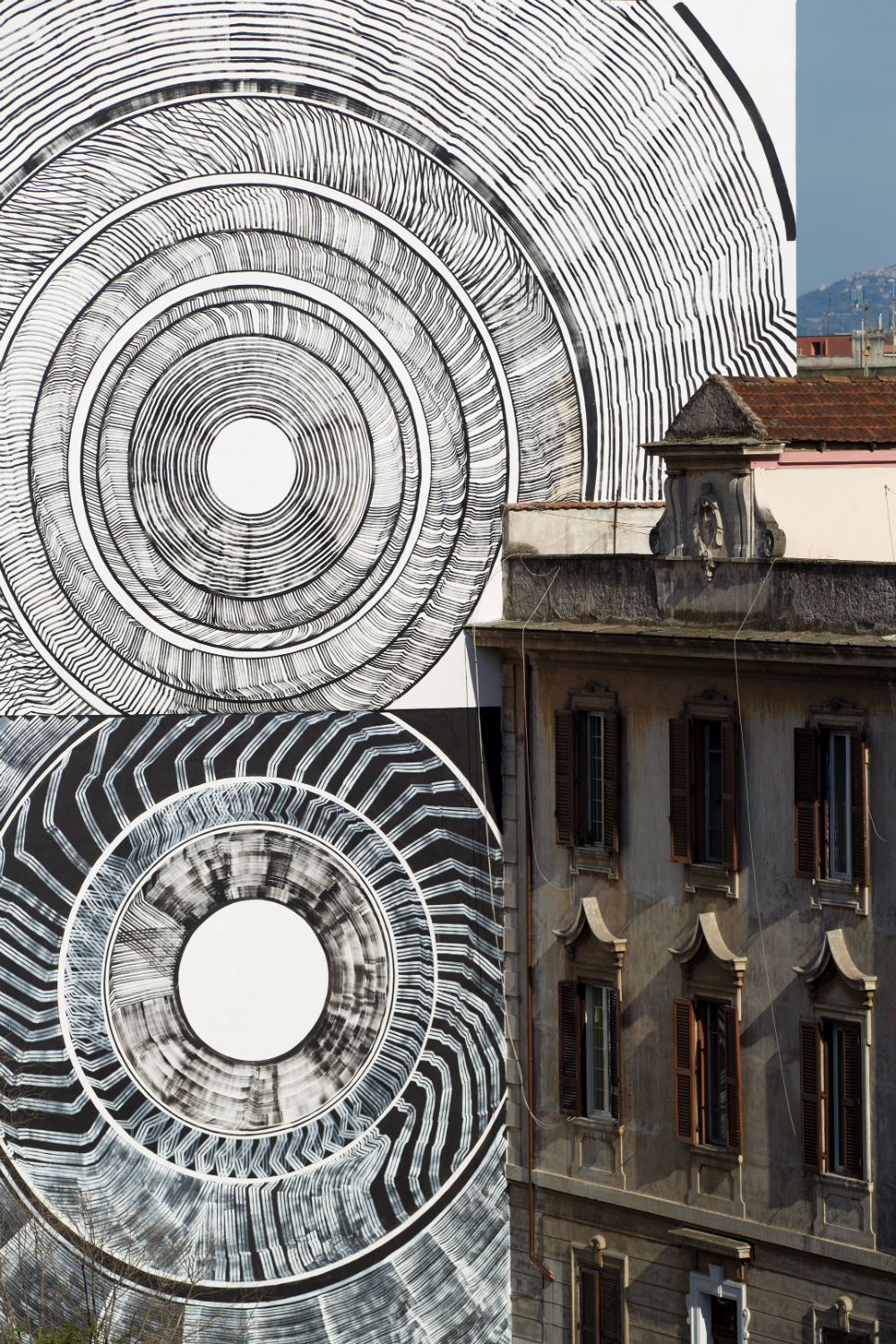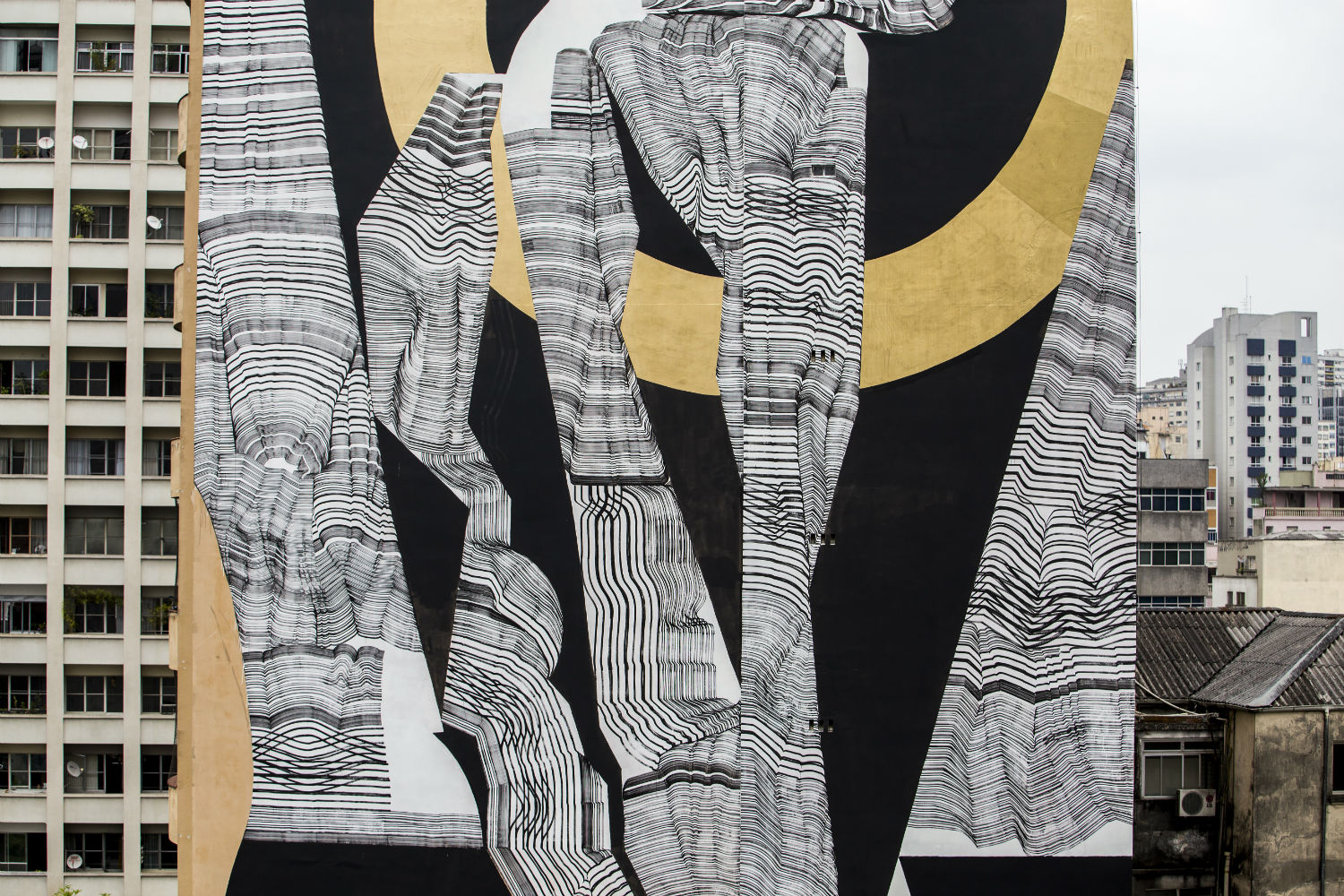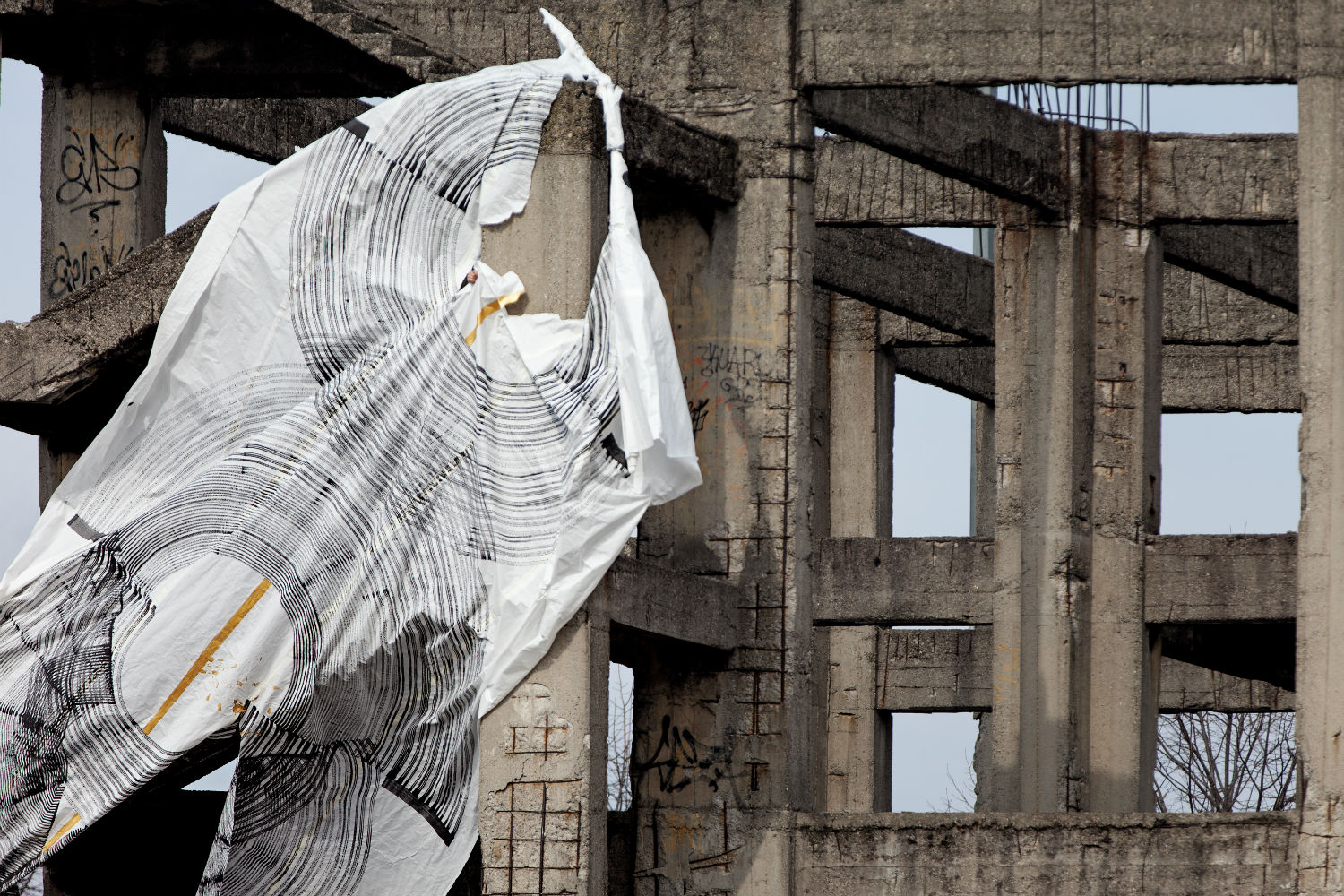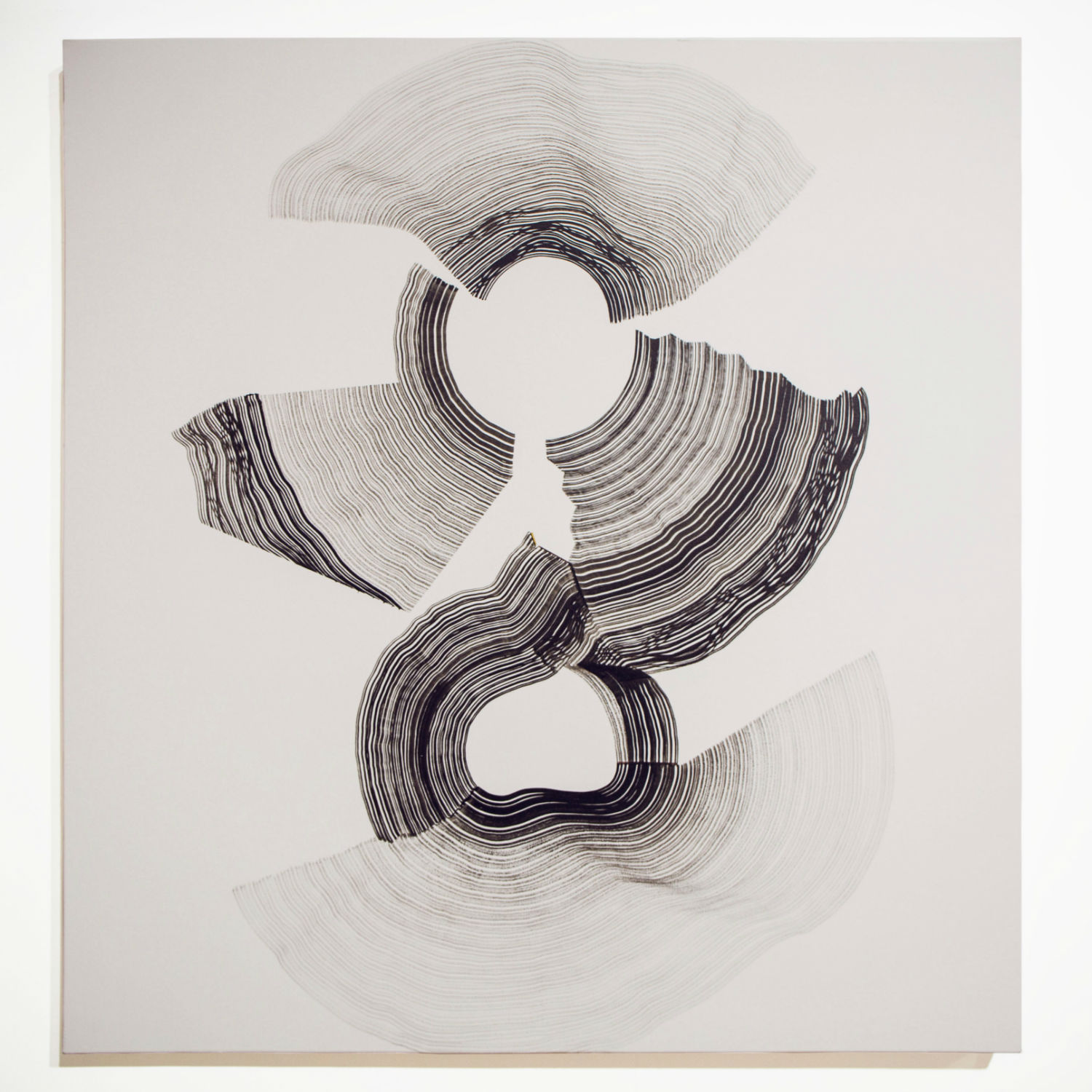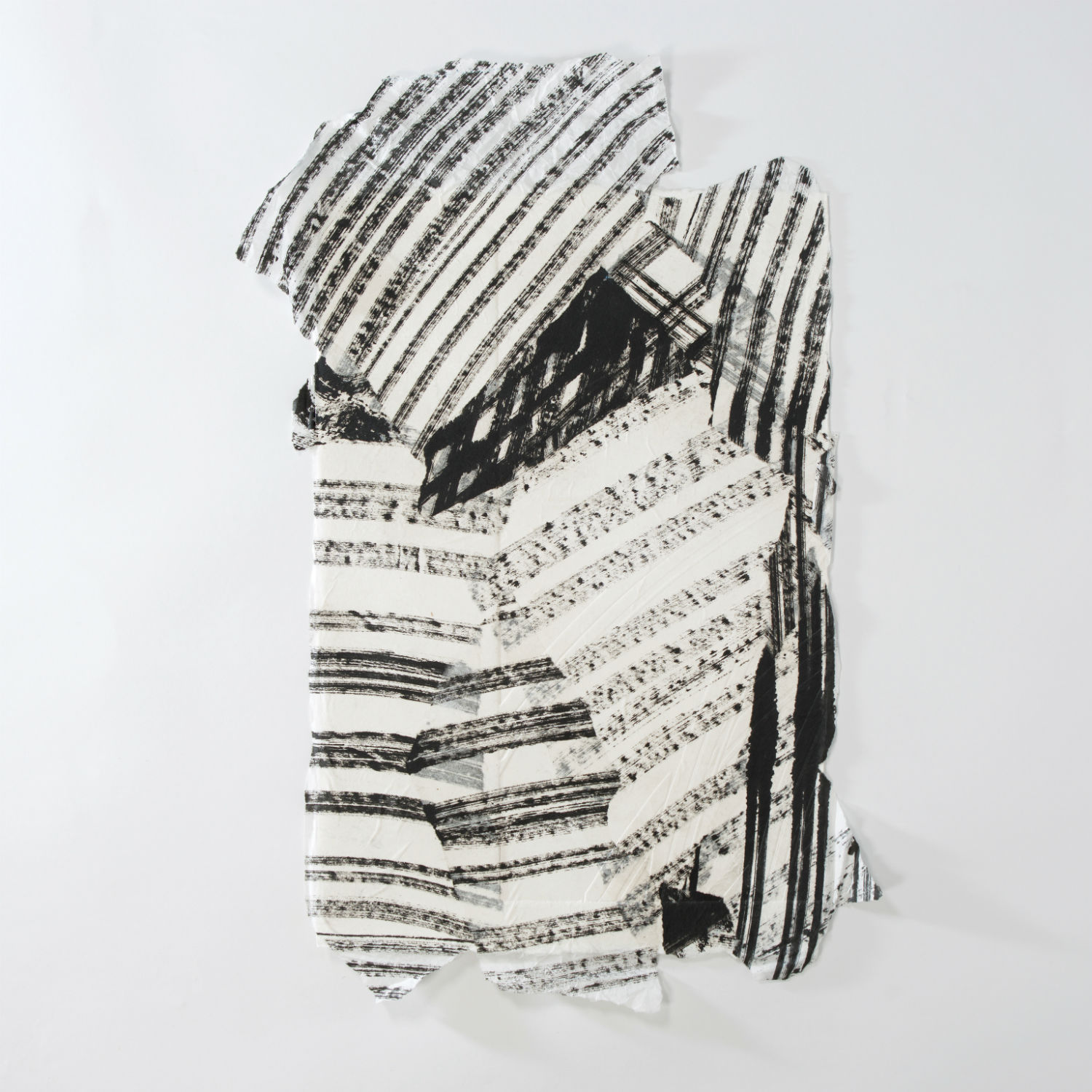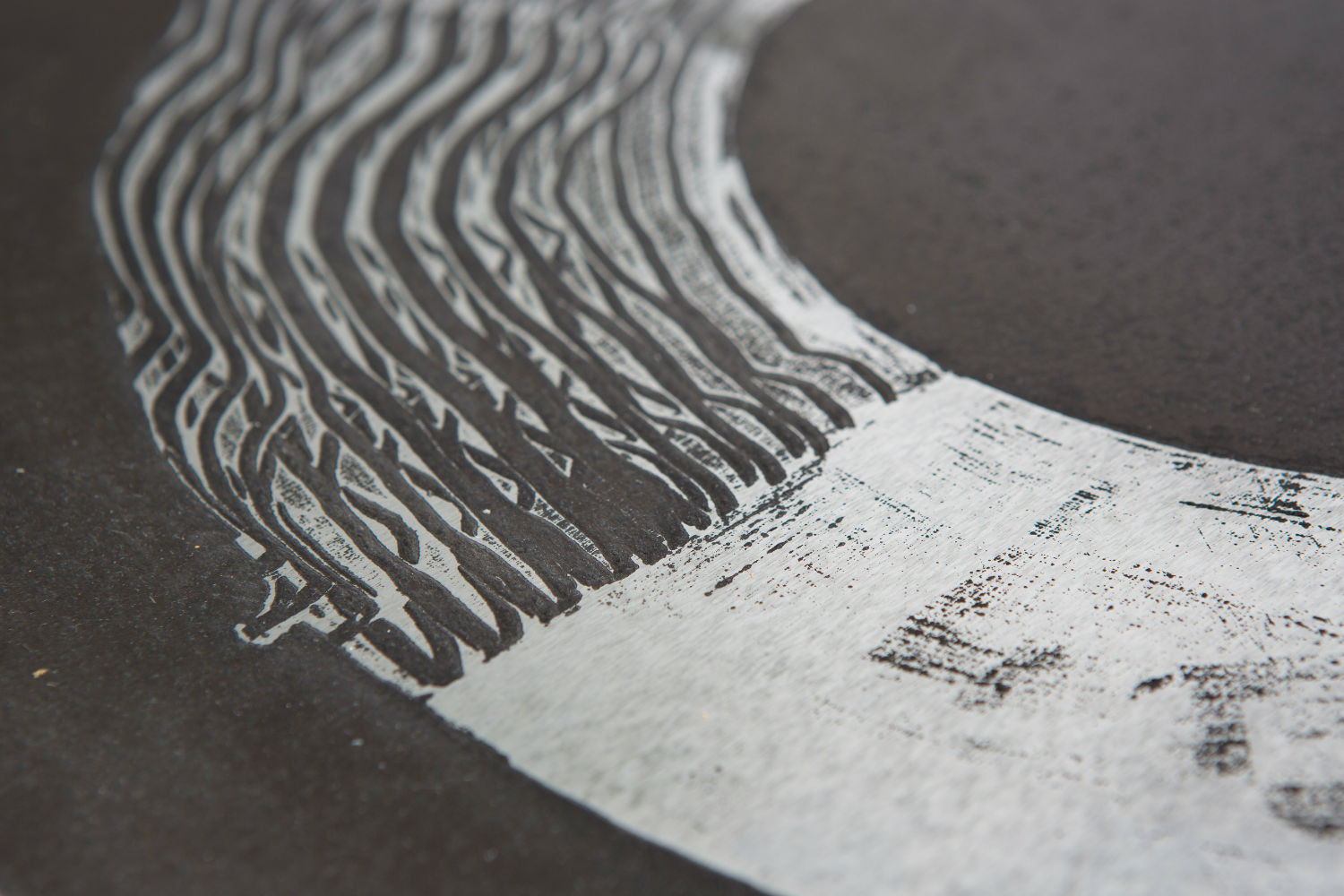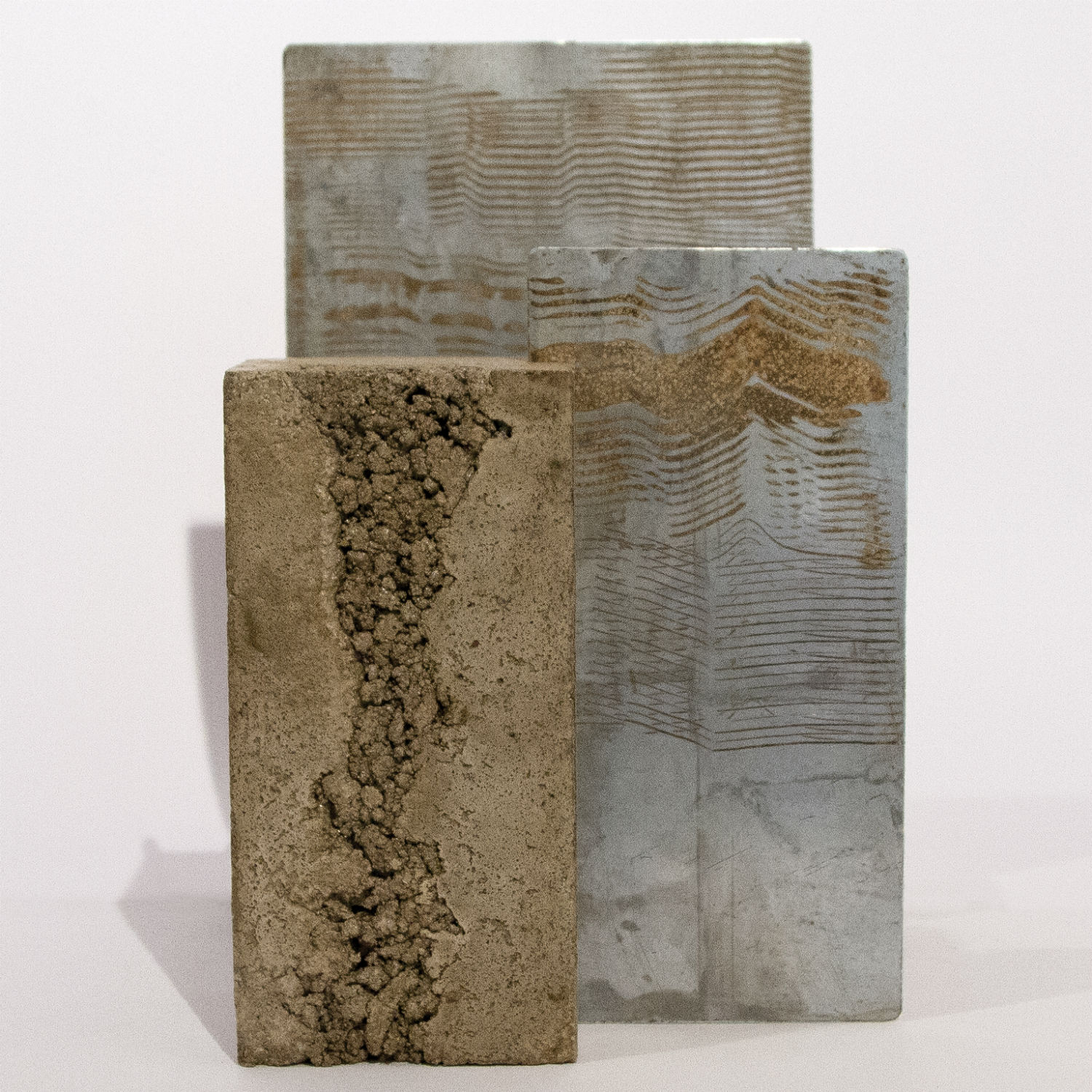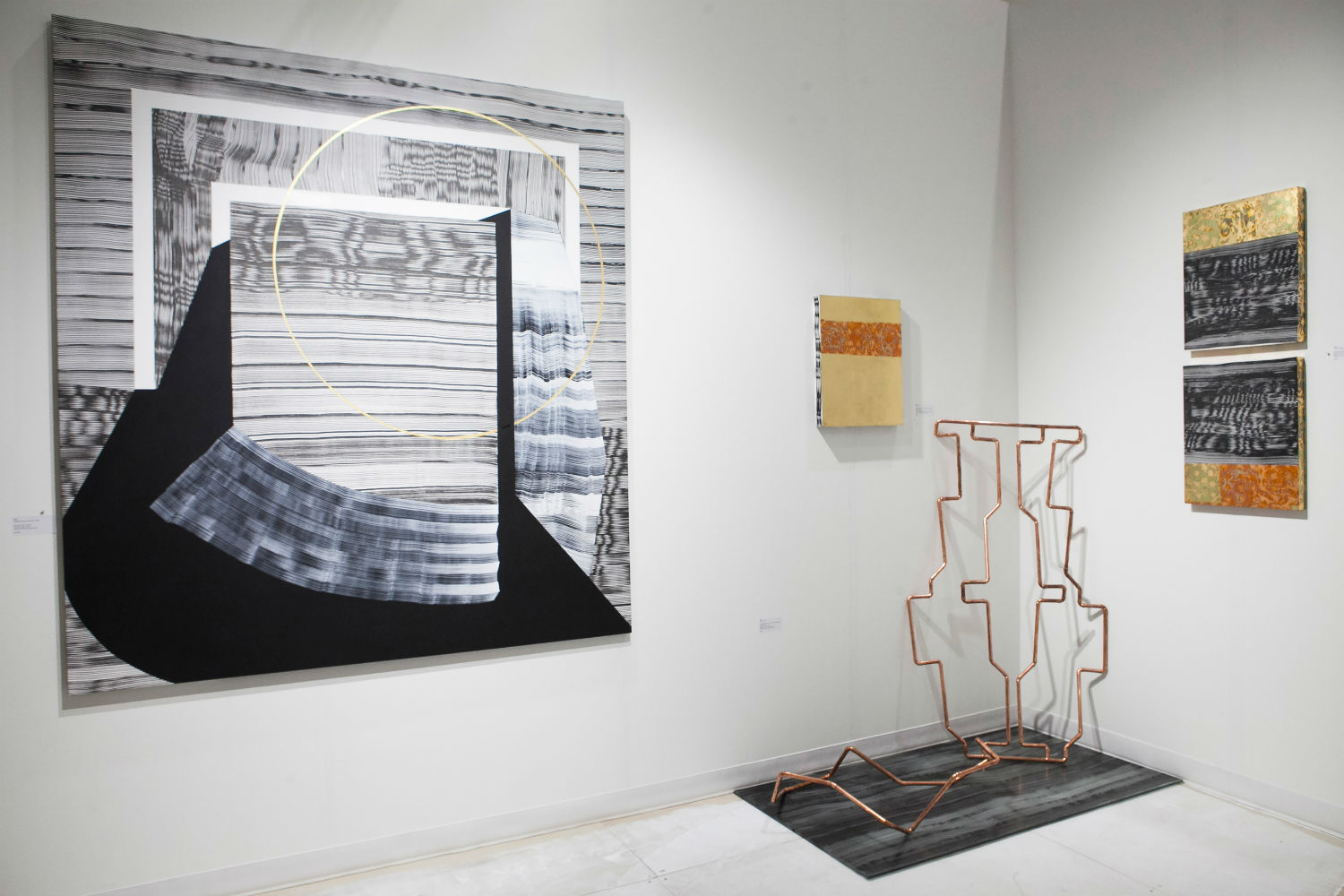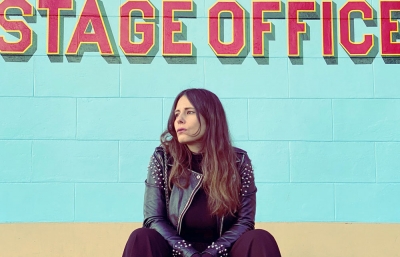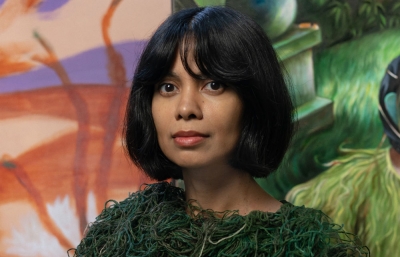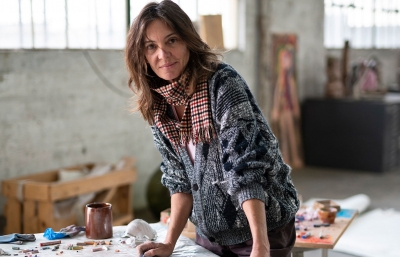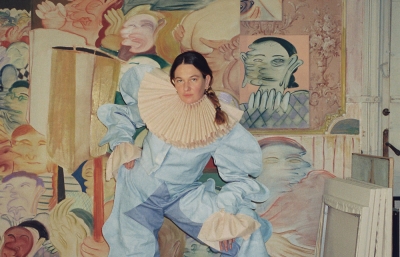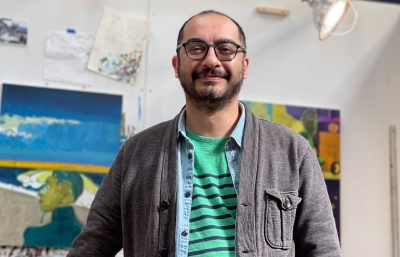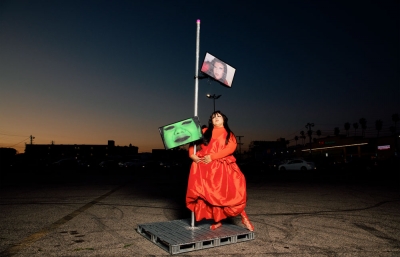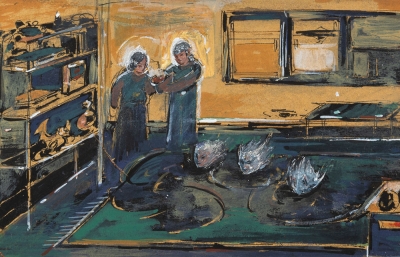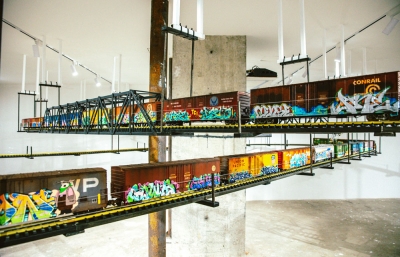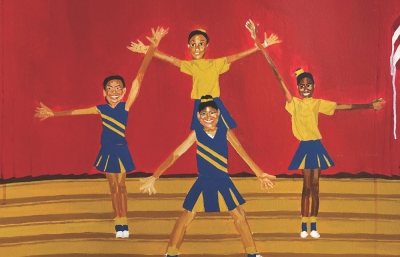The work of Milan-based 2501 is complicated fare: abstract but tactile. His art and process serve as an investigative conduit between an individual who has absorbed a number of principles from classical art and the application of them in a contemporary fashion. The result confers an ability to achieve a better personal understanding of one’s place in the modern, post industrialist urban environment, as well as the universe.
Utilizing an approach that can be both primitive and sophisticated, the repetition of exploratory and evaluative line work is highlighted by 2501’s sensitivity to the relationship of the exacting details of surface and applicant. Equally important are the dynamics of open air, empty spaces and established structures or derelict buildings. The symbiotic relationship between positive and negative space is always at play, as each element swaps real estate back and forth.
Read the full feature in the October 2016 issue of Juxtapoz Magazine, available here.
Gabe Scott: What is the significance of your moniker, 2501?
2501: I used the name “Never” when I began writing. After that, I started using the name “Robot inc.” during my first transformation. Then everything changed in my mind about what I needed to do with my art, so I took the date of my birth, 2501, to remind me of my artistic rebirth. Later, I realized that January 25th was also the same date that the city of São Paulo was founded. São Paulo is my second home. I lived there for almost three years and had my first solo show there, so the new name fit perfectly.
"The relationship between what we see and what we know is never settled."
How significant are repetition and variation within your work?
Sometimes I ask myself, how many lines have I painted? I have no idea, but I keep looking for an infinite numerical answer because I think that we never look at just one thing. The relationship between what we see and what we know is never settled. The aim of my practice is about starting a process of questioning.
I think that repetition and variation are a good way to reshape and reimagine a figure. If you try to examine how a line, geometric pattern, or design can profoundly shape parts of our world view, you clearly understand the basis of a figure. Lines, points, and shapes can be used by the artist and, therefore, can be considered by the observer as a point of departure. In a sense, it is similar to what an artist from the nineteenth century might have done with the landscape. As artists, we are both mystics and rationalists. Sometimes we leap to conclusions that logic cannot reach, and other times we clearly analyze and represent contemporary situations. But I always think that judging ideas is less interesting than investigating them. Rather than a critical approach, I think that abstraction can suggest a thematic discussion from where we can investigate, rather than simply judge.
How do you view or explain your perspective on the relationship between additive color and a monochromatic palette? Why have you largely chosen to accentuate grayscale within your practice?
If you look at my early works from around 2008 or 2010, you will see some colored lines or dots; then I eliminated colors and I’ve focused on black lines. In a way, monochrome patterns of wavy lines represent the constant changing of perception. Nothing that you look at is exactly the same twice. I just provide a path, then the audience is free to find meaning that I myself didn’t find in the work. I think that art has many potential interpretations, and by enhancing the line, I’m representing the endless shift of perception. I would love to instill the notion that our surroundings are forever changing.
At the same time, I utilize brushes differently, depending on both their size but also the quality of their bristles—soft or hard—and how I combine them. Sometimes I modify the brushes in order to have longer hairs around the perimeter and shorter ones internally, or vice-versa. Other times I mount multiple brushes of varying dimensions so that the lines have changing directions. Although this seems like a simple technical effect, they actually signify the use of empty space in my work. The difference in hardness or in brush shape creates gaps that are transferred to the surface, wall or façade, empty spaces that are more visible when increasing the pressure of strokes or decreasing the amount of black in the ink.

Portrait by Sha Ribeiro
How do you “read” patterns and how do you assess their connotations? Are these aspects that you try to consciously control or intentionally create, or are they natural occurrences that possess a range of variables?
Thanks to graffiti, for the last 20 years, I’ve been painting all over the place outdoors—abandoned warehouses, trains and illegal or festival-related walls. So I think my patterns reference the complexity of the urban fabric. The very act of painting in the open, and how physically demanding that can be, means that the unstable and vibrant energy of the street is absorbed into my work in an empathetic way. I like making something happen in the street. Painting illegally teaches you how to use risk and tension within the public space. Where the surfaces offer no footholds, you have to find a “performative” solution to use your body as a human ladder to reach the most conspicuous positions.
Even the size and time for these potential interventions are so different. It could be a simple piece of abandoned concrete somewhere, or a 10-floor facade. It could be done in one week or a few days. In May, in Kiev, I painted a blind facade of a 26-story building in just 4 days and with 8 liters of black ink. It is interesting to see how a possible shape might change an empty space in a short period of time. In the cities, there are many raw, naked spaces which are not traditionally recognized for their potential as a place of action. Our cities can recall a continuous oscillation between the past and future, above and below: the underground tunnels of ancient cities or the neighborhoods built right on top of each other can easily be seen as interconnected layers. The street stage is always surrounded by other accidental elements which work as patterns in the creative process. My wall paintings are always site-specific, so I take everything into consideration.
Tell me about your time and trips to Brazil. What kind of relationship have you developed with the urban landscapes there? I assume there are differences and some similarities between painting outdoors in São Paulo and Milan?
By dimension, style and vitality, São Paulo is considered the capital of Latin American street art, as NYC is for the United States. At the same time, the practice of mural writing has spread on a large scale through the Pixação style, which to me is a wholly independent type of graffiti with its own political significance and social overtones. The two faces of street art in São Paulo are emblematic of a typical contradiction in the contemporary metropolis. Institutions and spontaneous artistic expressions are not always compatible.
Milan, on a smaller scale, is the same. There are the same conflicts and love for art in public space. In my personal experience, these cities are spatial points from where I learned how to paint with different artists who work all over the world, moving continually from one continent to another, using painting itself as a means of communication and reciprocal interaction. That’s also the main reason why my ongoing project, Nomadic Experiment, is not to be understood either in an abstract or a Situationist kind of interpretation, but as a way of rethinking production by continuously changing the point of view.

Rome, Italy, 2015. Photo by Blind Eye Factory
When you are working on a large-scale mural, do you feel yourself creating a nonverbal dialogue linking a piece to the site and its surrounding area?
A large-scale mural gives shape to the city that, in its own right, contributes to the understanding of the collective imagination of the people who live and interact there. When you are exploring in a big city, you become disorientated and also feel a bit of dissociation from the surroundings; there is so much going on that it’s overwhelming. You are forced to identify connections, to locate them and rework them in order to reacquire a general, yet somewhat modified orientation to the landscape as a whole. Intersections take on a vital importance because, like the alterations, these too represent deciding moments, potential turning points, suggesting a change of direction, path, and action.
Along with the intersections, some of the most important reference points in the individual itinerary are visible external facades. Vertical spaces have a dual nature of outlines and empty spaces. The outlines, linear elements and borders between different areas act as lateral references that break up the continuity of a space, perhaps altering it or defining it physically. Though they fragment the urban environment, they are not always impenetrable, isolating barriers, but can also have the opposite effect.
A pictorial installation on a massive surface, like a mural, can, therefore, develop a more complex reconstruction of how we view landscape, passages, and paths in the city. It is a reference point for your own movement and for exploring the urban space, and is, therefore, linked to the idea of “the street.” Integrating concepts of multiple points of view, the formal elements of a mural reinvent an interrupted thread between environments; the sky as the outermost edge or absolute space, the opposing buildings as intermediaries or borders, and the accidental elements as stimuli and visual solutions.
You recently did the Movement x 1xRUN artist residency prior to your Processi Generativi exhibition at Inner State Gallery in Detroit. How did that show and time in Detroit affect you?
Detroit is a rough town, and I love it for many reasons. I had the idea to bring a little bit from each of the the places I was coming from and working in, to keep all the connections I had made with places alive, and to destroy the idea of a city that felt abandoned, disconnected and dying.
My concept of painting is based on the continuity of experience, on flow rather than stillness, and it is for this reason that I didn't show a sequence of fixed, motionless work, but something “moving” in Detroit. Art pieces in a gallery can look static, but if you can tell a story of motion as a result of your outdoor processes, you can show movement in the work. So I decided to start from an illegal action in Milan. I designed and painted a poster for a specific abandoned building, and left it free to move from the top to the bottom. I let air and light come through holes, cuts and sections of the building. The tilt of the poster, between black lines and grey diagonal and white paper, allowed the viewer to see the unfinished inside of the architecture. But the work was also a reminder of the personal fight against the wind and the difficulty of working with external surroundings.

Starting from this action in Milan, I cut the poster into many different micro pieces that I recomposed, overlapped and worked on with a dry press. The lines were printed and then cut into an iron plate which was then dipped into acid that bites into the surface of the plate where it was exposed. The expanded lines of the poster became the narrative of the fragmented compositions and traces of a real action with the micro changes generated by acid in the final piece. As the acid reacted with the iron plates, there was a constant production of new results that emerged from the preset pattern. It works because the aim was to create new beginnings and bring this process to Detroit. It was all about recalling external and internal actions and the relationship that produces results and triggers generative processes in different places.
In the end, my work is largely devoted to reclaiming and enhancing urban areas. I envision offering meaning and areas of freedom through informal methods of intervention. The large dimensions of paintings interact with architecture and the urban environment by influencing the perception of the city by its inhabitants, and creating a random scenography with a rational or instinctive charge. And I just use various analytic and expressive instruments to investigate this relationship.
----
Originally published in the October 2016 issue of Juxtapoz Magazine. Subscribe and get Juxtapoz delivered monthly.

